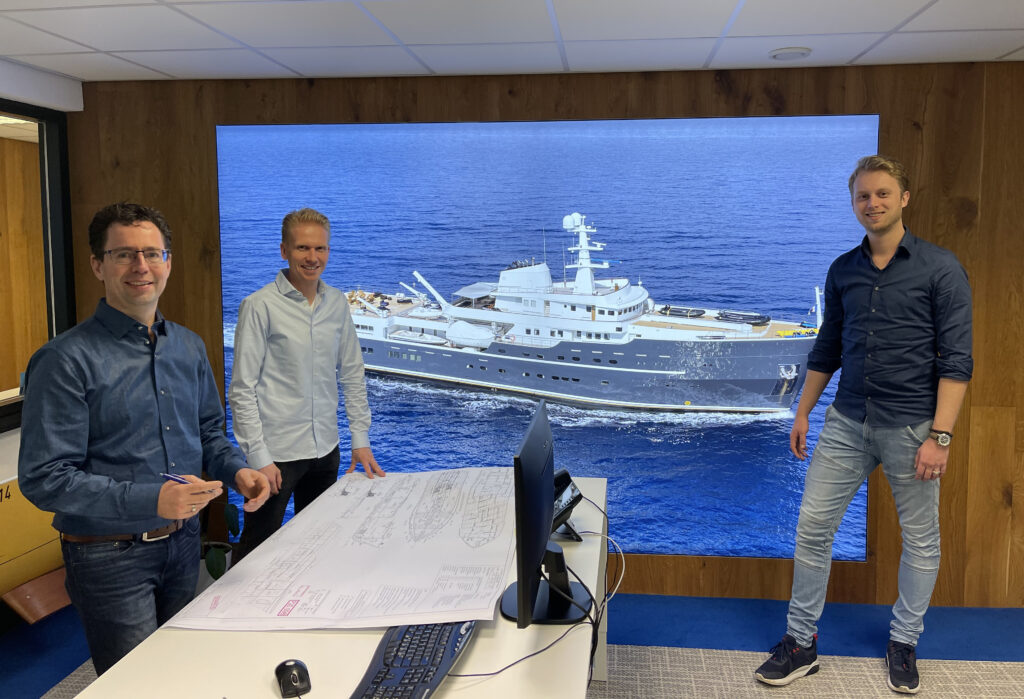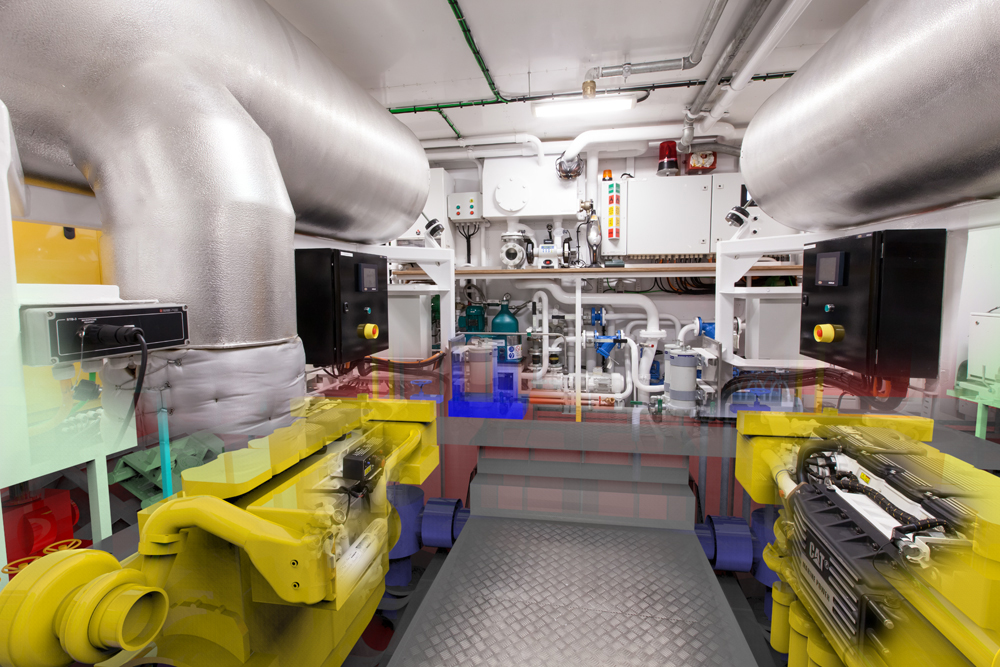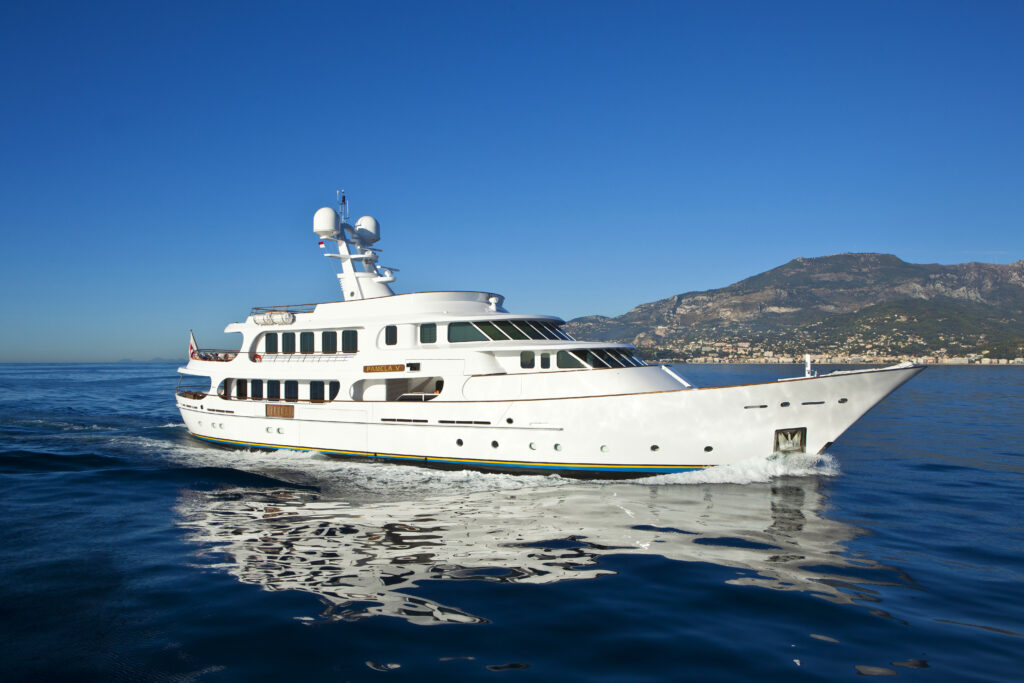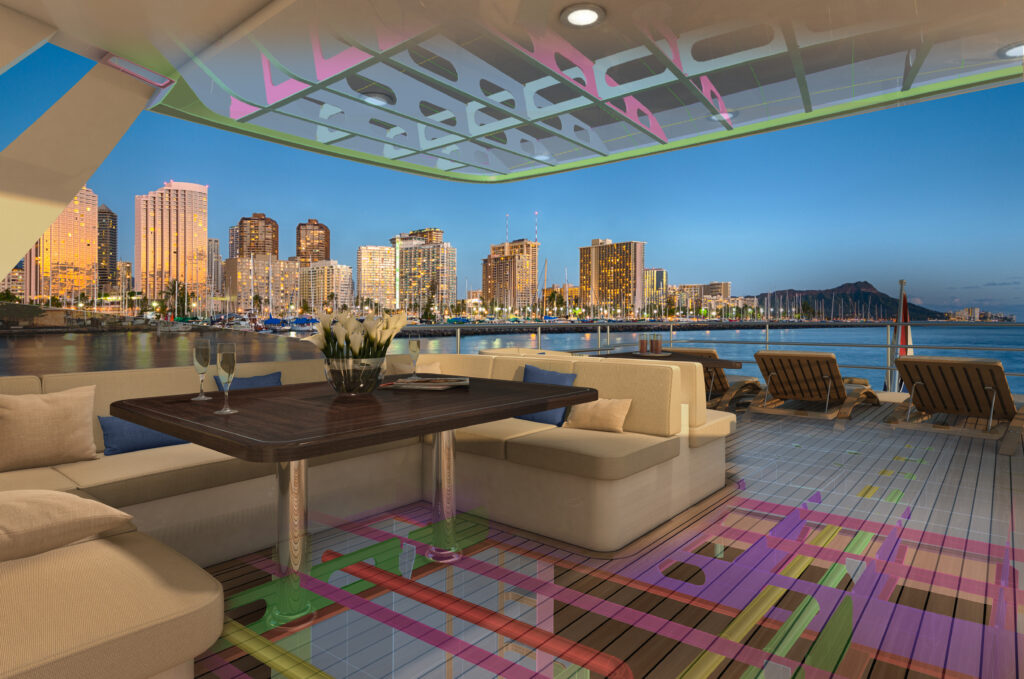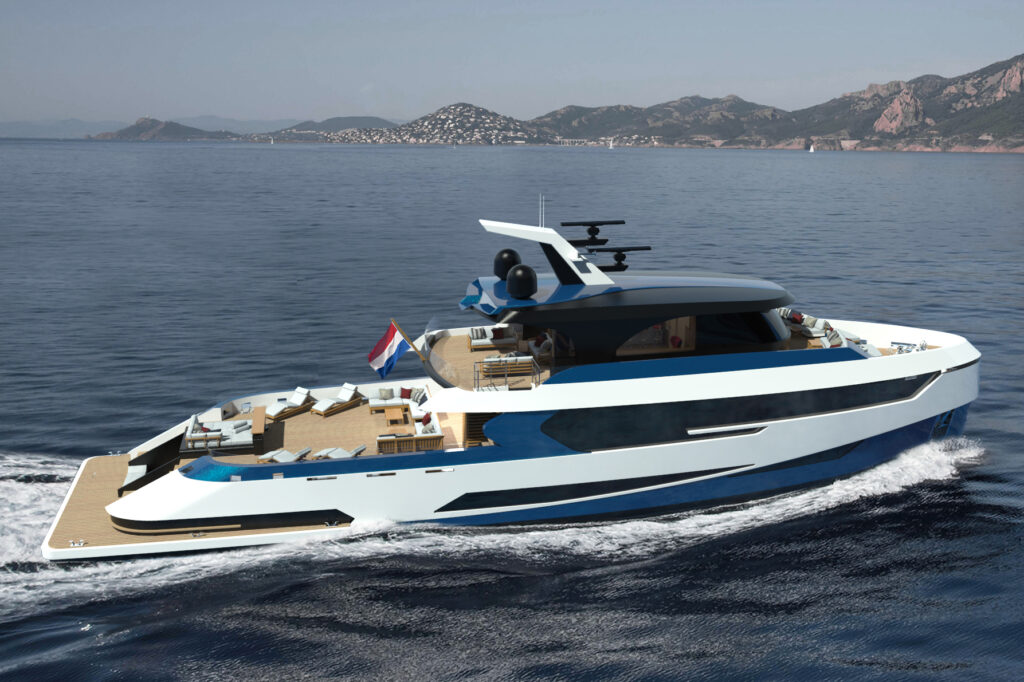A day in the Life of a superyacht marine engineer
Written by:
Georgia Tindale
Publication:
SuperyachtTimes
What does the job entail? In a nutshell, marine engineers design the yacht’s construction details, technical spaces and systems (including engine rooms, emergency generator rooms and so on) to ensure the smooth daily operation of the vessel and that any future maintenance can be carried out as easily as possible. In our final instalment of the ‘Day In the Life’ series, we discover the ins and outs of life as a marine engineer from those who know it best: Lars de Smit (Marine Engineer), Yoeri van Ommen (Naval Architect) and Jerry Lakeman (Marine Engineer & Financial Director).
What are the primary differences between the role of a naval architect and a marine engineer?
Lars: A marine engineer mainly takes care of the mechanical and technical side of the yachts, whereas a naval architect concerns themselves with stability and sailing characteristics. As marine engineers, we focus on special features such as hull doors, tender garages and so on, as well as all of the different systems on board that make the yacht work. This can include, for example, the propulsion and fuel systems, as well as the toilets and showers on board.
Yoeri: In our office, there is a thin line differentiating the job description of a Naval Architect and a Marine Engineer. At Diana Yacht Design, both naval architects and marine engineers work closely together on producing construction drawings: this is part of our core business. To make these drawings complete, we add in our specialisations, including the construction details of hull doors, piping systems and so on, to these drawings. Working together in this way, we can create the blueprints to build amazing yachts.
Describe your typical working day
Lars: A typical working day doesn’t exist for me. During the course of a project, we keep ourselves busy with numerous different things. For example, I can be working on strength calculations on one day, mechanical systems on the other and constructing features on the next. This is part of why I like being a marine engineer: we have very varied workdays.
What are the different challenges you face when constructing/engineering a yacht from different materials?
Yoeri: When you create a construction plan for a yacht, the building material is always important. A material like steel or aluminium can be welded, meaning that all sorts of shapes can be used, but when you construct a yacht out of wood, you use glue and bolted connections, so different building techniques are required. When you design a construction plan for a yacht made of wood, you need to take the limits of shapes and connection details into account.
Lars: Working with different materials is really interesting to do because you can exploit all of the strengths of the different materials out there. The challenge is combining these materials. For example, combining steel and aluminium causes corrosion and this is especially true for marine applications. Besides strengths, materials also have weaknesses. Engineering in such a way that negates the weaknesses of materials is a really interesting challenge.
How would you design the ultimate engine room?
Jerry: That is a good question! First, I would start off by adding in two extra metres of space to the engine room, then… Unfortunately, that is not how it works. In our experience, most owners like to have more space in the guest quarters than in the engine room. So we always design the engine room in the best possible way with easy access to all the equipment for straightforward maintenance and functionality. We try to avoid hiding pumps under the floor plates although it makes the engine room look nicer, it also makes maintenance and service harder.
Lars: The ultimate engine room for me would be a very technical but clean and organized space. Personally, I like the look of exposed technical systems. Organising all of the pipes and systems in such a manner that it’s neat looking is every engineer’s dream. Instead of hiding the systems and pipes, I would like to expose as much as is technically possible by using windows in order to see all of the nice details and systems that are placed within the engine room.
Describe how you work with the shipyard, naval architects and owners on a project
Yoeri: During a project, I have daily contact with the project manager of the shipyard. We mostly act as the naval architect in the projects, so we have a close relationship with all of the involved parties. We make concepts in collaboration with the shipyard which we then discuss with the owners. When the owners like the concept, we can fully engineer it with all of the aspects that are important for the designs. This way of working gives the owners a lot of control and this pushes me to be better in what I do. Owners’ wishes are sometimes hard to realize but it’s very cool when you can look back and be proud of the job we got done as a team.
What have been the most challenging moments you have come across whilst working on projects?
Jerry: Every project comes with its own issues. Our well-known rebuild project, Legend certainly presented us with plenty! We know from our experience that the old construction drawings of a yacht mostly differ from how the construction ends up going on board. Generally, in the past, construction drawings were not as accurate as now, the yard often changed the construction without updating the drawings.
To avoid this happening with Legend, we had to make a complete 3D scan. With this scan, we could determine the exact shape of the boat, allowing us to start modelling new components and to determine the parts which needed modifications according to our new design drawings. Adding construction details to an existing construction can make the refit process complicated.
Lars: The biggest challenge for engineers is engineering design features in such a way that the actual build stays true to the design, but is safe and strong and will last a long time. Making the complete yacht strong enough is challenging, but using Diana Yacht Design’s years of experience in combination with computer simulations (FEM simulations), we always manage to realize a strong yacht.
Tell us about some of your favourite projects
Yoeri: I was involved in a project to fit a helideck to a yacht in Australia. This yacht was built in the US. While we are used to working with the metric system, all the drawings for this project were imperial. This resulted in some extra challenges. Adding a helideck to a yacht has a large impact on the ship’s centre of gravity, so to be sure that the ship still fulfilled all of the stability criteria, we had to perform an inclination test in Australia. Working on a ship on the other side of the world and visiting the vessel after she was completed was amazing.
Jerry: In 2011 we designed the 44.9-metre yacht Pamela V. The owner had certain fixed ideas: the boat had to be eco-friendly and quiet in secluded anchorages. So together with the shipyard and electrical company, we decided to install an ESI (Energy Storage Inverter) system, with lithium-ion batteries. The ESI can supply electrical energy, or store this energy, so that it can be used more efficiently. The main benefit of the system in combination with smaller generators is lower soot emissions. As an added bonus, it also enables all-night electrical power without generators needing to be used. We were pioneers back then with our use of this system, and we still try to be pioneers today through our use of sustainable technology.
What do you predict will be the future trends in superyacht construction?
Jerry: I’m looking forward to the development of larger 3D printers. 3D printers which can print metals already exist but not on such a large scale. It will take years to develop, but these printers of the future will be able to print not only the construction, but also include the piping and even some metal interior parts. For us, the challenge will be designing a complete 3D model with everything included.
Lars: The ‘green yacht’ revolution is going strong and this will become an even more important topic in the future. Currently, we are seeing more and more companies offering green solutions that engineers such as ourselves can integrate into our projects as well as in our concepts. Last year, we presented our latest yacht concept called ‘Blue Angel’. She is equipped to run on hydrogen as her sole fuel, which would allow her to cruise with zero emissions. Making yachts environmentally responsible is going to be one of the biggest pillars in the yacht design of the future.

